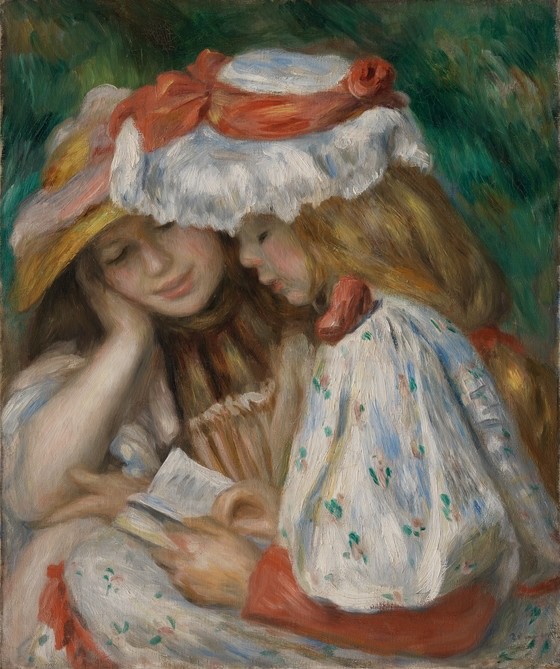Blast from the Past: This blog dropped the first time on September 15, 2015; and reposted on October 22, 2022. Recently, I have had many questions from readers about text placements for teaching reading, but without any consideration of fluency instruction. This blog from 7 years ago is focused specifically on the kinds of text that make sense to use when teaching oral reading fluency at various grade levels. I think the practical insights should be useful to many teachers.
Teacher question:
What are the most appropriate types of texts to use for fluency practice both for young new readers and even older, struggling readers?
Shanahan responds:
Learning to read is a developmental process. What students need to master at one point along the learning continuum can be quite different than at some other point.
This is certainly as true with fluency as with decoding and morphology.
With beginning readers our “fluency” goals are quite different than they soon will be.
I’ve often thought that initially our purpose is to make kids disfluent readers, carefully pronouncing each word as it comes. In a way, it is reading connected text as if it is a word list.
Why would we want that?
Research has shown that young readers have little conception of written words and the little white spaces that separate them. They also, of course, are in the process of learning to read words (some high frequency words along with gaining purchase on the decoding of other simple words). Gaining accurate pronunciation of each word is a challenging chore and it tends to result in a choppy and anti-prosodic oral rendition of texts. That’s to the good. But only briefly.
Starting out we should stress activities like “finger point reading” in which children must determine which words to point to during reading— engaging in choral reading, memorizing texts and then trying to “read” them aloud, and so on.
When starting out, pretty much all texts are beyond a student’s reading level, since these children aren’t actually reading yet in any conventional sense. It really doesn’t matter which texts are used for this in terms of the language level, readability, or spelling patterns, though it is obviously helpful to have sufficiently large print, decent amounts of spacing between words, sentences, lines, and a scheme that presents entire sentences on single lines initially, but eventually breaks sentences across lines.
Starting out it is helpful to work with predictable texts. Usually, this term refers to texts with repeatable patterns. In this case, the key is texts that students can easily hold in memory. That would include texts like “Brown Bear, Brown Bear,” (definitely a predictable text by any definition), but also texts like the “Happy Birthday” song or “Mary Had a Little Lamb,” predictable texts only because they enter easily into students’ memories. Language experience texts – texts dictated by the students themselves – fit this category, too.
Most important at this stage is to have texts that are easy to remember or follow. Texts that are predictable (Brown Bear,
What you are really trying to accomplish with these kinds of text is a kind of choppy reading, in which students “read” each word, word-by-word.
The point of using such texts is to get students to “read” them aloud (pronouncing the texts word by word) while pointing at the appropriate words. That’s a bit tricky at the beginning – kids fumble a bit among letters, syllables, and words.
Once they get the idea of matching oral words to written words, then a different kind of text begins to matter.
Carol Chomsky claimed that fluency practice helped students learn to apply their nascent decoding skills, and Joe Torgesen asserted that struggling readers (and probably young readers too) tend to memorize individual words from their fluency practice. Their assertions match well with the National Reading Panel findings that fluency practice has a substantial impact on word reading and decoding outcomes. Hence, it make great sense to focus on relatively decodable texts that are a bit beyond students’ abilities to read fluently. We need to make sure the texts include words that we want our students to master. It would also help if those target words were repeated throughout the texts. The same would be true for spelling patterns and sound-symbol relations; repetition is key to helping the students to grasp the systematic nature of spelling.
It surprises many teachers – given what they have usually been told – but generally, the texts used for fluency practice should be at levels that we would traditionally label as frustration level. We want students to improve their reading of these texts from their oral reading attempts, feedback, and rereading. If they were practicing with texts they could already read reasonably well, we wouldn’t expect to see any improvement.
It has been popular to use poetry for fluency practice and that can be fun. I wouldn’t be against that kind of practice on occasion. Why not have some fun?
However, the point of fluency training is to help students to develop the ability to read more typical prose well. That’s why I would more often focus fluency practice on the kinds of texts that I want students to learn to comprehend.
In fact, I think it can be a good idea, when teaching students to read texts that are above those traditional reading level designations (like having a student read a grade level text despite being a below grade level reader), to have the students do fluency practice as part of the scaffolding that will be provided. The idea here is to get students to resolve some of the word reading problems and prosody/expression that those harder texts may present. Reading a text once or twice aloud before seriously trying to comprehend it, tends to raise the students’ ability to handle that particular text – reducing the gap between student and book.
Too often our focus is on the texts in reading classes. Consider transferring at least some of this oral reading exploration to the science or social studies books. Those can be bigger challenges for many kids.
When I’ve worked with middle school and high school classes, I have sometimes found that students who could read a typical literary story with acceptable levels of fluency, could not do the same with an Algebra text. The mix of English grammar and algebraic grammar and the algebra symbols present a challenge that undermines their ability to make sense of mathematical text.
Indeed, different kinds of text make sense when teaching fluency across the years.







Comments
See what others have to say about this topic.